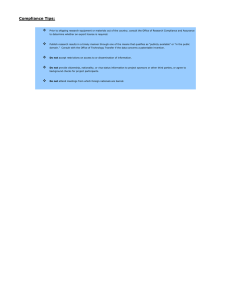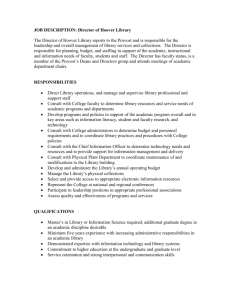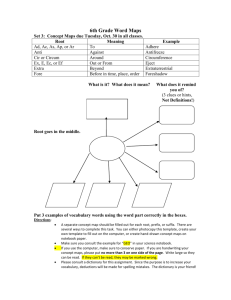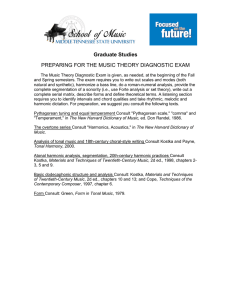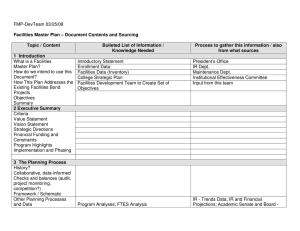Climate change and Environmental Degradation Risk and Adaptation assessment Step 3
advertisement
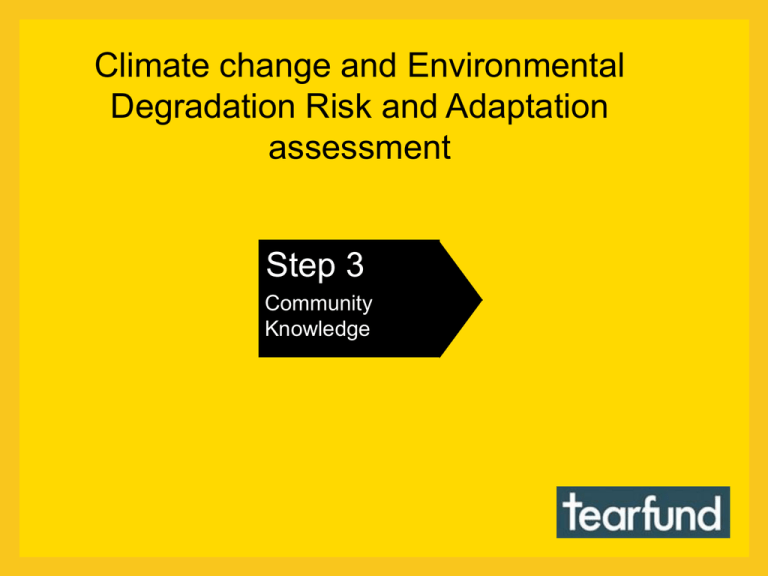
Climate change and Environmental Degradation Risk and Adaptation assessment Step 3 Community Knowledge Consult communities • Share & verify our findings • Understand community coping strategies • Participatory responses Consult communities Participatory research Focus groups Community mapping, including mapping natural resources Seasonal calendars Historical time lines Transect walks Use of ranking/ matrices Storytelling/ poetry/ street drama Consult communities Participatory research Refer to your question list Explain what you’re doing Ask them about CC & ED What changes observed? How have they adapted? Is it getting worse? Consult communities CASE STUDY Community project in Bangladesh Ignoring certain people’s views can lead to serious environmental hazards being overlooked In Bangladesh, rural communities in coastal and riverside areas have embarked on riskreducing activities, designed to help them cope better with the devastating impact of cyclones. Contingency plans have been developed, volunteers trained etc, and community confidence increased. However, at the conclusion of a recent project assessment, villagers confided that their real priority was the day-by-day erosion of their land and loss of livelihood, as sea levels rise and encroachment accelerates. Consult communities Example A group of staff from the Somuni Women’s Rehabilitation Programme were able to use findings of a PADR exercise that had been conducted in the mid-altitude zone during the previous year. They also conducted new community-based research in one floodplain community. During this research the team spoke separately to groups of older women and younger women, who each helped to develop seasonal timelines and community maps. Questions they asked were: – How has the weather changed since you were children? – How have crop types and crop yields changed since you were children? In the last ten years? – How have other natural resources (eg trees, water, plants, animals) changed since you were children? – How have occurrences of landslides changed since you were children? In the last ten years? – How does this affect your workload today? – How has the community responded and adapted in the past to these environmental changes? Consult communities - our responsibilities Help communities make their own decisions Don’t take all their knowledge and leave them with nothing Help them realise their own capacities and build on them Consult communities Complete Part 1 b of the CEDRA report format 1b Community Experiences • Seasons are not as they used to be. The rainy season is unpredictable, shorter and rainfall is more intense • Crops are failing due to waterlogging and crop pests breeding faster. This means more work for us younger women • Our health is suffering because there is not enough food due to crop failures, and we are the last ones to eat (older women) • We can list 8 species of animals and 12 species of plants that have disappeared from this area over the last 10 years
